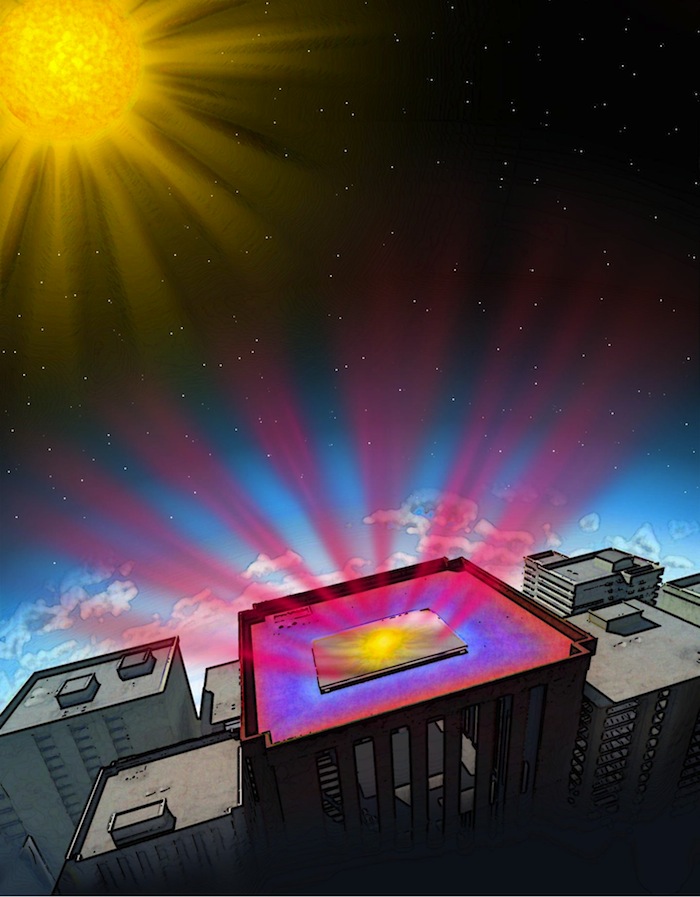-
Tips for becoming a good boxer - November 6, 2020
-
7 expert tips for making your hens night a memorable one - November 6, 2020
-
5 reasons to host your Christmas party on a cruise boat - November 6, 2020
-
What to do when you’re charged with a crime - November 6, 2020
-
Should you get one or multiple dogs? Here’s all you need to know - November 3, 2020
-
A Guide: How to Build Your Very Own Magic Mirror - February 14, 2019
-
Our Top Inspirational Baseball Stars - November 24, 2018
-
Five Tech Tools That Will Help You Turn Your Blog into a Business - November 24, 2018
-
How to Indulge on Vacation without Expanding Your Waist - November 9, 2018
-
5 Strategies for Businesses to Appeal to Today’s Increasingly Mobile-Crazed Customers - November 9, 2018
Newly Developed Film Improves Solar Cell Efficiency
It works by capturing intense heat or thermal radiations from infrared rays and emitting them into atmosphere.
Advertisement
Doctoral student Linxiao Zhu, electrical engineering professor Shanhui Fan and research associate Aaswath P. Raman are Stanford engineers who have developed a thermal overlay to cool solar cells. While deterring heat buildup, the thin, patterned silica material does not block sunlight, allowing the photons to enter the solar panel where they are converted to energy.
The group’s discovery deal with a problem that the solar industry has faced since long: Hotter solar cells lead to their less efficiency at conversion of the photons in light into electricity.
According to Fan, “Solar arrays must face the sun to function, even though that heat is detrimental to efficiency”.
Their experiments showed that the overlay allowed visible light to pass through to the solar cells, but that it also cooled the underlying absorber by as much as 13 degrees Celsius.
The team tested their technology on a custom-made solar absorber – a device that mimics the properties of a solar cell without producing electricity – covered with a micron-scale pattern designed to maximise the capability to dump heat, in the form of infrared light, into space. A common misconception is that they use the sun’s heat to generate renewable energy when in fact, it’s the light that solar cells are after. This means a crystalline silicon solar cell with an efficiency of 20 percent that is cooled 23 degrees would see an improvement in absolute cell efficiency of over 1 percent. Solar researchers have spent years trying to develop a solution to this problem, and Stanford is perhaps at the top of the list when it comes to new developments.
The Standford researchers recommended that the transparent overlays would ideally be suited for clear and dry environments, which happen to be ideal for large solar panels.
That’s not necessarily the only way. “I am optimistic”, Raman noted.
The team believes that the technology has significant potential for any outdoor device that needs to remain cool but requires preservation of the visible spectrum of sunlight for practical or aesthetic reasons.
“Say you have a auto that is bright red”, Zhu said.
Advertisement
For color perception to happen, objects would have to reflect visible light. The study debuted in the journal Proceedings of the National Academy of Sciences.




























